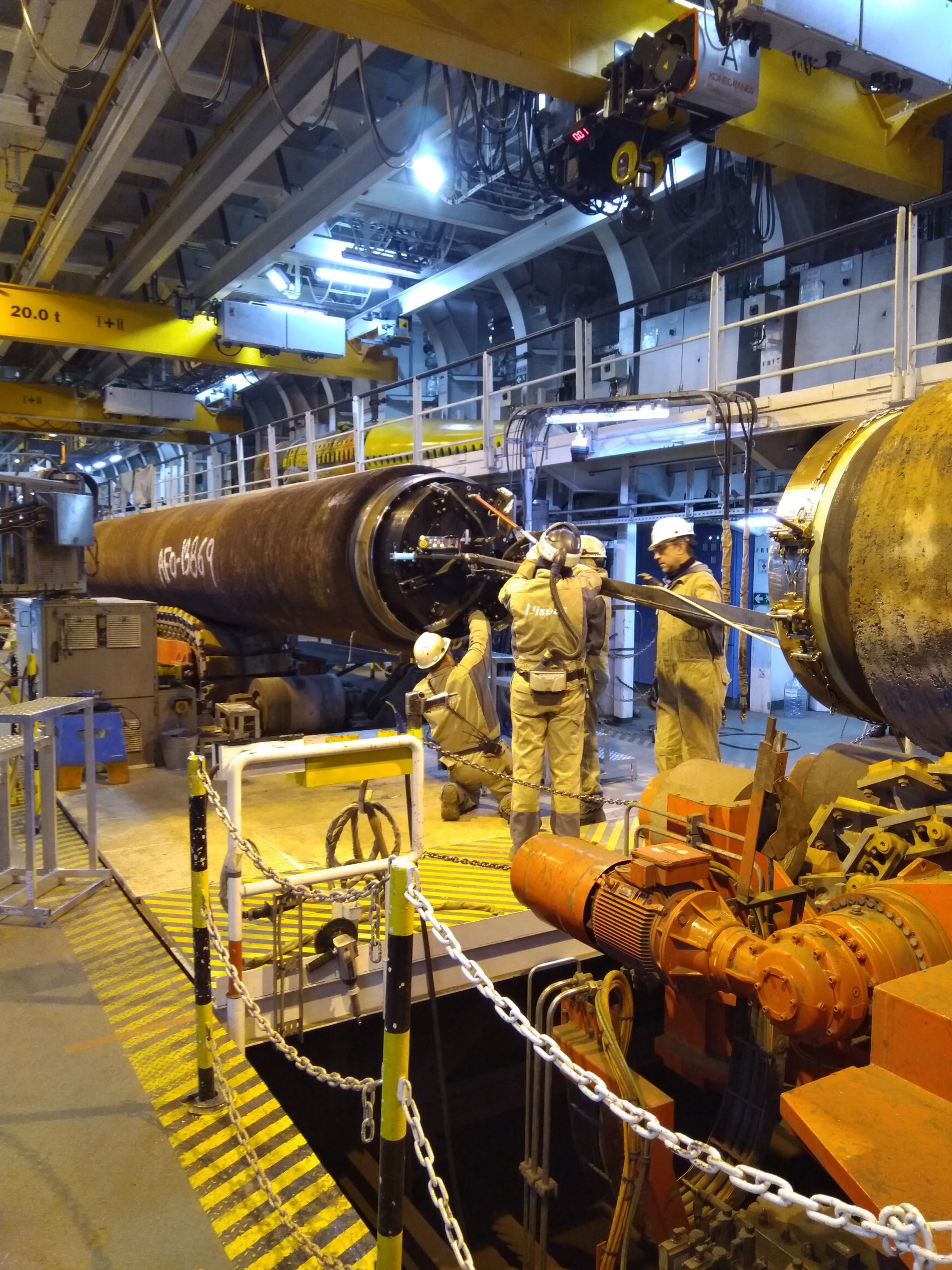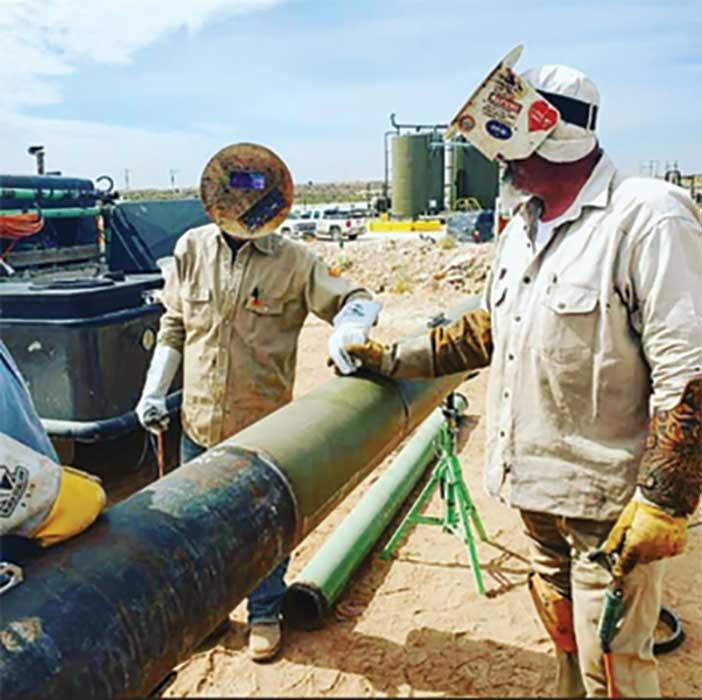Advanced Methods in Pipeline Welding Evaluation: Advancements and Technologies for Boosted Precision and Reliability in Weld Analysis
The landscape of pipeline welding examination is undertaking a substantial makeover, driven by innovative techniques that assure to enhance both precision and reliability in weld assessments. Advancements such as computerized assessment systems and progressed imaging innovations are redefining conventional methods, while non-destructive screening techniques ensure material honesty is preserved. As these modern technologies evolve, they not only elevate problem detection rates however additionally enable a lot more efficient maintenance techniques. However, the implications of these advancements expand beyond immediate benefits, raising crucial concerns regarding future techniques and standards in the industry.

Importance of Weld Assessment
Ensuring the stability of pipeline welds is essential to the general safety and security and integrity of commercial systems. Welds offer as the architectural backbone of pipelines, which transport a selection of liquids under varying stress. Problems in welding can lead to devastating failings, causing not just substantial economic losses however also prospective environmental calamities and risks to public safety and security. For that reason, extensive inspection of welds is integral to the lifecycle of pipeline infrastructure.
The significance of weld assessment expands beyond simple compliance with governing standards. It serves as a proactive action to identify and rectify blemishes, such as insufficient fusion, porosity, or splits, before they intensify into major problems. Reliable inspection methods also add to the durability of pipelines, minimizing upkeep expenses and improving operational effectiveness.
In addition, detailed weld inspections foster trust fund among stakeholders, including regulatory bodies, investors, and the areas served by these pipelines. By making sure that all welds fulfill the needed criteria, companies can minimize dangers and copyright their online reputations. In recap, weld evaluation is important not only for operational stability yet additionally for the broader ramifications it holds for security and ecological stewardship.
Automated Inspection Systems
The combination of automated evaluation systems in pipe welding has revolutionized the method to making sure weld quality and honesty. These systems employ advanced robotics and man-made intelligence to conduct evaluations that are not only quicker but also much more regular than conventional methods. Automated systems can cover substantial sizes of pipes effectively, catching data that human examiners could overlook due to fatigue or environmental conditions.
One of the key advantages of automatic inspection systems is their capacity to operate in unsafe settings, reducing the risk to human assessors. They use numerous non-destructive testing (NDT) techniques, such as ultrasonic testing and magnetic particle evaluation, to assess weld integrity without compromising the structure. The data collected is processed in real-time, permitting instant responses and prompt restorative actions when issues are identified.
In addition, automated systems assist in the standardization of evaluation processes, guaranteeing that each weld is evaluated against regular standards. This not just enhances the reliability of outcomes but additionally simplifies compliance with regulatory requirements. As sectors remain to prioritize safety and security and functional effectiveness, the role of automatic assessment systems in pipeline welding will undoubtedly broaden, leading the way for more innovative top quality guarantee approaches.
Advanced Imaging Technologies
Frequently employed in contemporary pipe welding assessments, advanced imaging technologies have actually significantly improved the ability to discover and assess weld problems. Techniques such as digital radiography, computed tomography, and thermographic imaging offer assessors with high-resolution photos that have a peek at this site expose sub-surface problems and architectural incongruities that might be undetectable to the naked eye.
This leads to faster examinations and enhanced accuracy in recognizing important issues. Computed tomography, on the other hand, supplies three-dimensional imaging, allowing inspectors to imagine intricate geometries and examine the integrity of welds from multiple angles.
Thermographic imaging utilizes infrared modern technology to identify variations in temperature level, determining locations of possible weakness or anxiety within the weld. These advanced imaging innovations not only improve defect discovery prices yet also minimize the moment and sources needed for pipe inspections. Therefore, they play a critical function in keeping pipeline safety and security and reliability, guaranteeing conformity with market standards while reducing operational risks.
Non-Destructive Evaluating Techniques
Using numerous strategies, non-destructive testing (NDT) approaches are vital in pipe welding evaluations, enabling for the analysis of weld stability without endangering the product's architectural stability. NDT includes a range of approaches, including ultrasonic screening (UT), radiographic screening (RT), magnetic fragment testing (MT), and color penetrant screening (PT) Each technique has distinctive benefits and applications depending on the details needs of the inspection.
Ultrasonic testing utilizes high-frequency audio waves to find interior flaws, supplying precise measurements of weld density and stability. Pipeline Welding Inspection. Radiographic screening employs X-rays or gamma rays to produce pictures of the weld, disclosing inner problems that may not show up on the surface. advice Magnetic fragment testing is efficient for discovering surface area and near-surface suspensions in ferromagnetic materials, while color penetrant testing highlights surface cracks by making use of a tinted dye
Including these NDT methods into pipeline welding inspections enhances the precision and dependability of weld assessments, ensuring that possible failures are determined early. As sectors demand greater criteria for security and efficiency, the function of NDT in maintaining the honesty of bonded frameworks continues to be critical in pipeline construction and upkeep.

Future Fads in Weld Analysis
As we seek to the future of weld assessment, advancements in modern technology are poised to transform the approaches employed for evaluating pipeline honesty. The assimilation of man-made knowledge (AI) and maker understanding in evaluation procedures is anticipated to enhance the accuracy of problem discovery and anticipating maintenance. These modern technologies permit real-time data analysis, enabling inspectors to determine prospective issues prior to they escalate into substantial problems.
Furthermore, making use of drones equipped with sophisticated imaging systems is getting grip. These aerial assessments can cover huge locations rapidly, recording high-resolution photos and information that can be examined for issues in hard-to-reach locations. This not only improves safety but likewise boosts efficiency in the examination procedure.
In addition, the development of clever sensing units embedded in pipeline systems provides the possibility for constant monitoring. These sensors can identify changes in stress, temperature level, and resonances, providing beneficial insights into the health of the welds with time.

Final Thought
Finally, the integration of advanced strategies in pipe welding assessment significantly boosts the accuracy and reliability of weld analyses. Developments such as computerized assessment systems, advanced imaging modern technologies, and non-destructive testing approaches play an important duty in enhancing problem detection prices and cultivating positive maintenance strategies. As these technologies remain to develop, they will additionally make sure the security and effectiveness of pipeline systems, inevitably adding to the honesty of essential framework.
